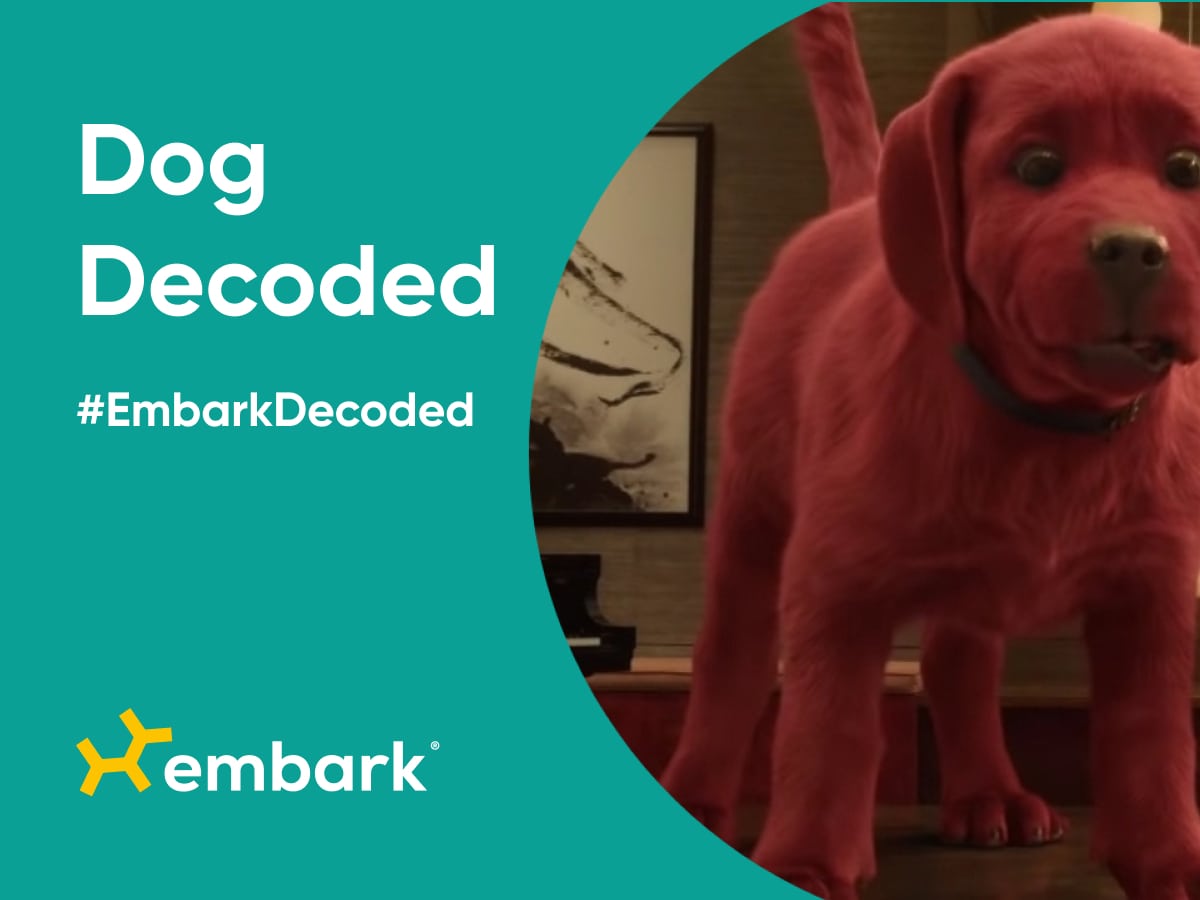When asked about dog shedding, many people looking to bring home a new pet would say they have a preference for non-shedding dogs. Between allergies and keeping the house clean, shedding dogs get a bit of a bad reputation. But the fact is most dogs shed.
According to an Embark health survey, nearly half of the respondents said their dog sheds a moderate amount or higher. Our veterinarian team explains the science behind dog shedding and what causes it.
About dog hair
The main function of a dog’s coat is to regulate temperature. This ability varies depending on coat length, thickness, and color. A dog’s coat serves other purposes, too, like protecting their skin from light, helping with sensory perception, and preventing injuries.
A dog’s coat changes throughout their lifetime, such as when they grow from puppies to adults or when the seasons change.
How dog hair grows
Hair actually grows in cycles, giving dogs (and other mammals that shed) the ability to adapt to changes in temperature and other environmental factors. This cycle involves growing and resting phases for the individual hair within the hair follicle and varies with age, breed, and location as well as the region of the body where the hair is growing.
About dog shedding
Shedding occurs as old hairs enter the resting phase and essentially die, allowing new hair growth to occur. According to Keith Hnilica and Adam Patterson in Small Animal Dermatology, hair loss and regrowth occurs in what is known as a “mosaic pattern,” where individual hair follicles are in different phases of growth at any given time. This growth pattern prevents baldness from appearing.
In general, hair grows the most in the summertime, and shedding occurs more in the spring and fall. Up to 50% of hair follicles may be in the “resting” stage in the winter.
What causes dog shedding
Animals exposed to significant amounts of artificial light (in other words, all of our indoor pets) may shed all year round. Almost 47% of respondents to our health survey said this was the case with their dogs. Consistent light simulates daylight, which interrupts the normal photoperiod that an animal living outside would otherwise experience.
Stress is another factor that contributes to hair loss. Just like people who say they lose hair when stressed, dogs may experience the same. With severe stress, many hairs can enter the resting phase at once, causing them to be shed together rather than at different times.
The genetics of dog shedding
Because we are a genetics company, we can’t forget about the many genetic factors that explain certain aspects of shedding and the variety of coats we see in dogs. In fact, Embark cofounder and Chief Science Officer, Dr. Adam Boyko, is one of the scientists who discovered many of the genes associated with these traits.
According to Edouard Cadieu, et al. in their study on coat traits, there are three specific genes directly associated with different coat types in dogs. RSPO2 is associated with wiry coats (like those of Poodles), FGF5 corresponds to a short or long coat, and KRT71 correlates with a curly coat. Interestingly, dogs with wiry coats are low-shedding, which is associated with a variant in the RSPO2 gene.
Furthermore, Dr. Boyko’s lab discovered a fourth gene, MC5R, which affects whether dogs without wiry coats are heavy shedders or just moderate shedders (think about an Akita vs. a Boxer). This gene, which is conserved across all mammals, is expressed in sebaceous glands and is involved in the production of sebum, affecting water repellency and thermoregulation. This suggests a relationship between sebum production and shedding in dogs.
The variation in coat length, hair conformation, and degree of shedding are all associated with various combinations of the RSPO2, FGF5, and KRT71 genes. For example, short-haired breeds such as Basset Hounds have normal copies of all three genes. Long-haired breeds, like Golden Retrievers, have a variant of FGF5 corresponding to a long coat. Meanwhile, Airedale Terriers have variants in KRT71 and RSPO2 causing a short but curly and wiry coat.
Harmful causes of dog shedding
Sometimes the reason a dog is shedding can be harmful. Keep an eye out for the following causes of shedding.
Mites: Hair loss in the face and feet coupled with itchy, red skin that may be thickened or scabbed.
Ringworm: Patchy areas of hair loss.
Endocrine abnormalities: Distinct areas of hair loss along with signs of increased drinking and urination.
Nutrition: A dull or dry hair coat. Omega-3 fatty acids can help supplement nutrition.
Shedding is natural
Shedding is a natural part of having a dog in your home. Some breeds are low-shedding, but most indoor dogs will shed at least some amount. As long as you do some basic grooming with your dog and keep an eye out for harmful signs of shedding, it shouldn’t be a problem. You may also want to customize your dog care products to your pup’s shedding profile. Just remember that shedding is good for your dog and means their coat is working as it should be.













